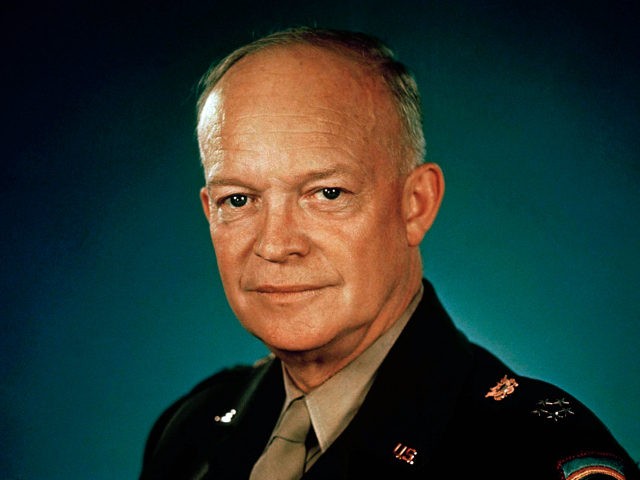The swamp in Washington encroaches on our very Mall, where it threatens to claim a planned memorial to Dwight Eisenhower which against all precedent has been designed without accountability to or participation from the American public.
Unsurprisingly the result is more contentious and expensive than any past presidential memorial, which hasn’t kept eleven appointed commissioners from trying to build it anyway. Now, without full funding in hand as the law requires, they are asking Congress for public money to build their design on a pay-as-you-go basis.
It’s a bad deal for the American people President Trump can prevent. Draining this corner of the swamp also comes with a prize that should appeal to our builder president, in the form of a better, cheaper, more public-spirited tribute to another leader who worked beyond party lines to make America great.
What makes the current proposal so bad? For a start, it is too big, with room to accommodate all three memorials to Washington, Lincoln, and Jefferson side by side. The Eisenhower Memorial would cost as much to build as the three of those monuments together, so it is also too expensive. The design also takes an attitude to honoring President Eisenhower that is unclear at best, depicting him as a seated child with a life-size statue, which is always too small where public sculpture is concerned. This sculpture will occupy a vast park its designer calls a “theater for cars” on account of a ten-story metal screen that serves as its backdrop.
Controversy around a plan so different from other presidential memorials has delayed approval and funding for years. It all sounds so unlike the uncontroversial, personally modest President Eisenhower, but it sounds very much like memorial designer Frank Gehry, another problem with his design.
But it’s how we got Gehry’s design that’s the real problem. Every memorial commissioned for the National Mall since the Vietnam Veterans Memorial in 1981 was designed through public competitions, which invited all who were interested to submit designs. These were then judged anonymously based on merit, which is how a twenty-year-old college student named Maya Lin came to design the Vietnam memorial. In true democratic spirit these public competitions give equal opportunity to amateurs and professionals and focus on ideas, not personalities. They are widely accepted as fair, and they consistently deliver memorials on time and on budget.
The Eisenhower Memorial Commission ignored this standard public process and selected Gehry directly. The architect has close personal and professional ties to the commission’s then-chairman, with whom he worked on a past project for a concert hall in Los Angeles. Outright appointment being politically unfeasible, the commission turned to a government program used for federal courthouses and office buildings, which considers only registered architects and seeks designers, not designs. Congressional investigators found that for the Eisenhower Memorial the established selection criteria of this program were changed, in a way that benefited Gehry by placing more emphasis on reputation, where he is strong, and less on past performance, where his record of cost and schedule overruns leaves him weak.
That under Gehry’s direction President Eisenhower’s memorial has suffered exactly these problems should surprise no one. His design will cost more than twice its allotted budget, and he has already claimed or been pledged fees in excess of his original agreement based on a constantly expanding scope of work. Nor, given the fact he was chosen before he finalized a design, did Gehry have any incentive to keep costs or controversy down for fear his commission might go to someone else, as it would in a public competition where the winning design proved this problematic.
So the Eisenhower Memorial’s high cost and controversy follow directly from its architect’s undemocratic and possibly irregular selection. If we build his plan now, and on a pay-as-you-go basis no less, costs and controversy will only escalate. Eventually, they can confuse or undermine President Eisenhower’s legacy itself. That careful steward of the public purse was a defender of public process and a prophet and scourge of bureaucratic tyranny. He would have likely more than object to what–and how–his commission aims to build in his name.
As with so much of what’s been corrupted in Washington, it’s also the integrity of a larger public process that’s at stake. There is no good reason to abandon public competitions that reflect our political ideals and consistently work, nor to substitute for this democratic process what looks very much like insider patronage.
President Trump has the opportunity to fix President Eisenhower’s memorial and protect the public participation that should be part of it. This requires something he knows very well how to do–step into a wasteful process to get a long-delayed project built better and cheaper. Here’s hoping this opportunity is too good for him to pass up.
Sam Roche, an architect, is the spokesman for Right by Ike: Project for a New Eisenhower Memorial, at www.rightbyike.org.

COMMENTS
Please let us know if you're having issues with commenting.